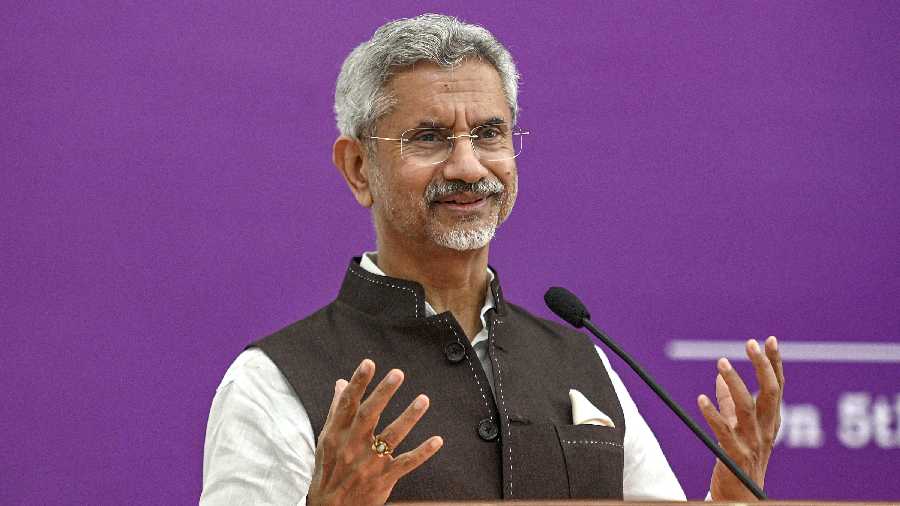China has deployed over 70,000 troops along the frontier in eastern Ladakh and continues to build infrastructure inside India-claimed lines on the strategic Depsang Plains as well as other friction points where both sides have disengaged partially, sources in the security establishment said.
While external affairs minister S. Jaishankar on Monday said that India had made its biggest-ever LAC deployment to counter the Chinese buildup in Ladakh, security officials said China had deployed drones to watch Indian troop movements.
“The Chinese have deployed a large number of surveillance drones over the buffer zones created within India-claimed lines (during the partial disengagements) to keep an eye on the movements of Indian troops,” a security official attached to the Union home ministry said.
He added: “A recent ground assessment suggests that China has also deployed over 70,000 soldiers along the LAC in eastern Ladakh and are continuing with their build-up. They have been building additional roads, helipads and military camps inside India-claimed lines on the Depsang Plains, from where they have refused to disengage so far.”
The Chinese have also been “mobilising more men and machinery into the Galwan Valley and other standoff points, where both armies have carried out partial disengagement”, he said.
A defence ministry official said the Indian army had carried out a matching troop deployment considering the threat from the Chinese army. “The biggest worry is that they (the Chinese) are continuing with their massive infrastructure development inside India-claimed lines at Depsang Plains,” he said.
Military veterans and security experts have for months warned that China may be planning to hold on to the 1,000sqkm of India-claimed territory it is estimated to have occupied since May 2020, by declaring a new status quo on the undemarcated LAC.
As part of the disengagement agreements, Indian and Chinese troops have retreated by equal distances from the flashpoints in the Galwan Valley, Pangong Lake, Hot Springs and Gogra, leaving demilitarised “buffer zones” in between. This means the Chinese still remain within the India-claimed lines they have transgressed while India has given up control over more territory that it claims as its own.
“The Chinese are already in control of the heights at the Galwan Valley and Pangong Lake and are in a position of huge military and tactical advantage. They have refused to disengage from the Depsang Plains,” a former lieutenant general told The Telegraph.
The former lieutenant general said: “The creation of the buffer zones reflects how the Chinese have forced India to agree to their reinterpretation of the LAC. This has serious implications.”
Military veterans have castigated the Narendra Modi government for “ceding” further territory to the Chinese by agreeing to the buffer zones instead of insisting on a return to the pre-transgression status quo. The Chinese are also building large-scale infrastructure, including villages, close to the frontier in the eastern sector. On December 9, Indian troops foiled a Chinese attempt to transgress the border in the Tawang sector of Arunachal Pradesh, the clash injuring 15 to 20 Indian soldiers.











